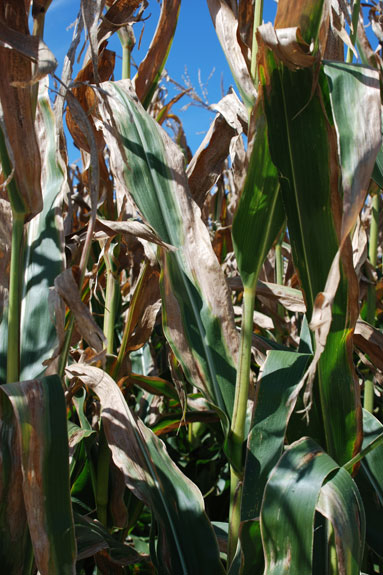It was reported from two fields in southern Minnesota recently, and it may be starting to develop elsewhere. This is a disease to watch for.

The symptoms on plants infected with Goss's leaf blight and wilt are typically seen on the leaves, although they can include stalk infection.
Tan linear lesions with irregular margins extending parallel to the veins develop on leaves, and these can affect 50 percent or more of the leaf area. Irregular dark water-soaked spots ("freckles) develop in the lesions.
Shiny patches of dried bacterial ooze (appears like a thin layer of dried egg white) is often present on the lesions. For plants with systemic stalk infection, the stalk can have orange vascular bundles.
Goss's leaf blight and wilt is caused by a bacterial pathogen that overwinters in infested corn debris near the soil surface. It primarily infects through wounds caused by hail, wind, rain, wind-blown sand, or possibly machinery. Development of this disease is favored by warm, wet, and humid conditions.

Goss's leaf blight and wilt can be managed by using resistant hybrids, rotating crops, deep tilling after harvest, and by controlling grassy weeds.
Grasses such as green foxtail, shattercane, and barnyard grass can be infected by the Goss's wilt pathogen. Fungicide applications do not provide any control for this disease. FG
—Source: University of Minnesota Cooperative Extension website
PHOTOS
Goss's Leaf Blight and Wilt in Minnesota. Photos courtesy of Dean Malvick of University of Minnesota Cooperative Extension.







